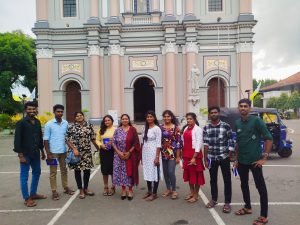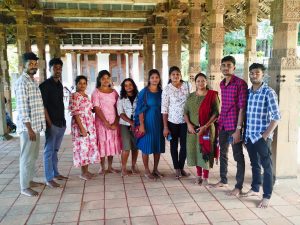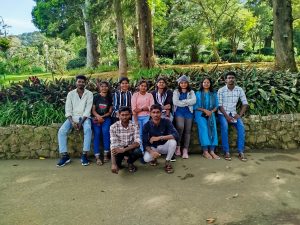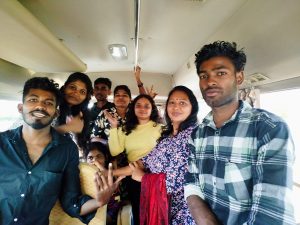The Department of Christian Civilization, University of Jaffna, organized a study tour for Level II students from October 2 – 4, 2024, with the objective of enhancing experiential learning by exposing students to key historical, artistic, and religious sites. This academic excursion provided an opportunity for students to connect theoretical knowledge with real-world experiences, aligning with the curriculum’s focus on Christian art, interreligious dialogue, and cultural coexistence. The study tour was designed to evaluate Christian artistic heritage, particularly drawings, paintings, and sculptures preserved in selected churches in Southern Sri Lanka. It also facilitated a comparative study of Buddhist and Christian art forms, exploring their mutual influences, adaptations, and the role of inculturation in religious art. Additionally, the tour aimed to examine the manifestation of divinity through religious symbolism and artistic expressions, while fostering a deeper understanding of how Christian and Buddhist cultures coexist and influence one another.
A total of 11 students, accompanied by two staff members, participated in this three-day academic tour. The University of Jaffna provided a subsidy for subsistence and accommodation, while the Department of Christian Civilization covered transportation and other logistical expenses, ensuring a smooth and enriching experience for all participants. The arrival of Christianity in Sri Lanka introduced various European art forms, which were later adapted and preserved in churches and religious institutions. During the tour, students visited historic churches, religious institutions, and cultural sites, engaging in comparative studies of artistic forms. They observed murals, frescoes, statues, stained-glass windows, and altars, analyzing their European influences and indigenous adaptations. The visit to Buddhist temples and Christian churches further provided a comparative perspective on theological symbolism and artistic styles, allowing students to appreciate the shared artistic and cultural heritage of these religious traditions.
Another key focus of the study tour was to explore the concept of inculturation, where Christian art in Sri Lanka has integrated elements of local artistic traditions, creating a unique fusion of Western and Sri Lankan cultural expressions. Through their visits, students witnessed firsthand the peaceful coexistence of Christian and Buddhist traditions, reflecting on the interwoven nature of religious and cultural identity in Sri Lanka. Beyond its academic significance, the study tour also helped students develop important life skills, such as teamwork, adaptability, time management, and critical thinking. It allowed them to work collaboratively in diverse environments while ensuring an efficient and productive learning experience.
The Department of Christian Civilization remains committed to providing students with interdisciplinary learning experiences that extend beyond the classroom. This study tour was a meaningful academic and cultural experience, reinforcing the importance of Christian and Buddhist artistic traditions, interfaith dialogue, and cultural appreciation. It successfully bridged historical, artistic, and theological perspectives, making the study of Christian Civilization dynamic, relevant, and deeply connected to Sri Lanka’s cultural landscape.




